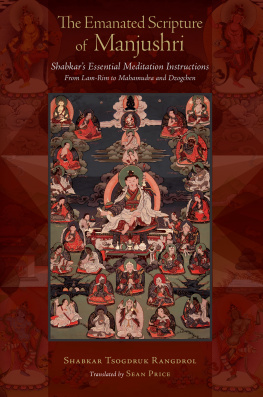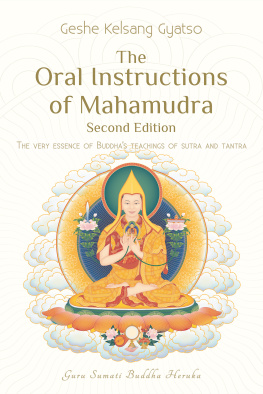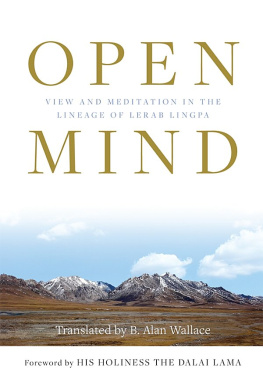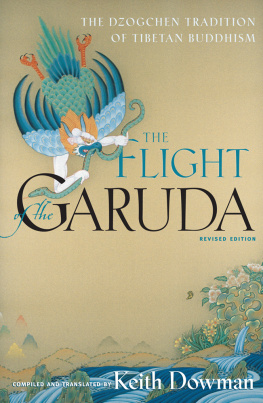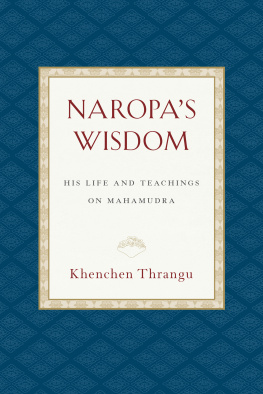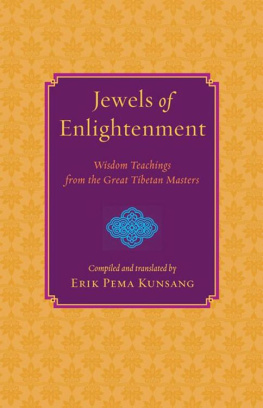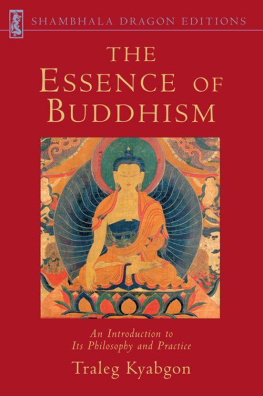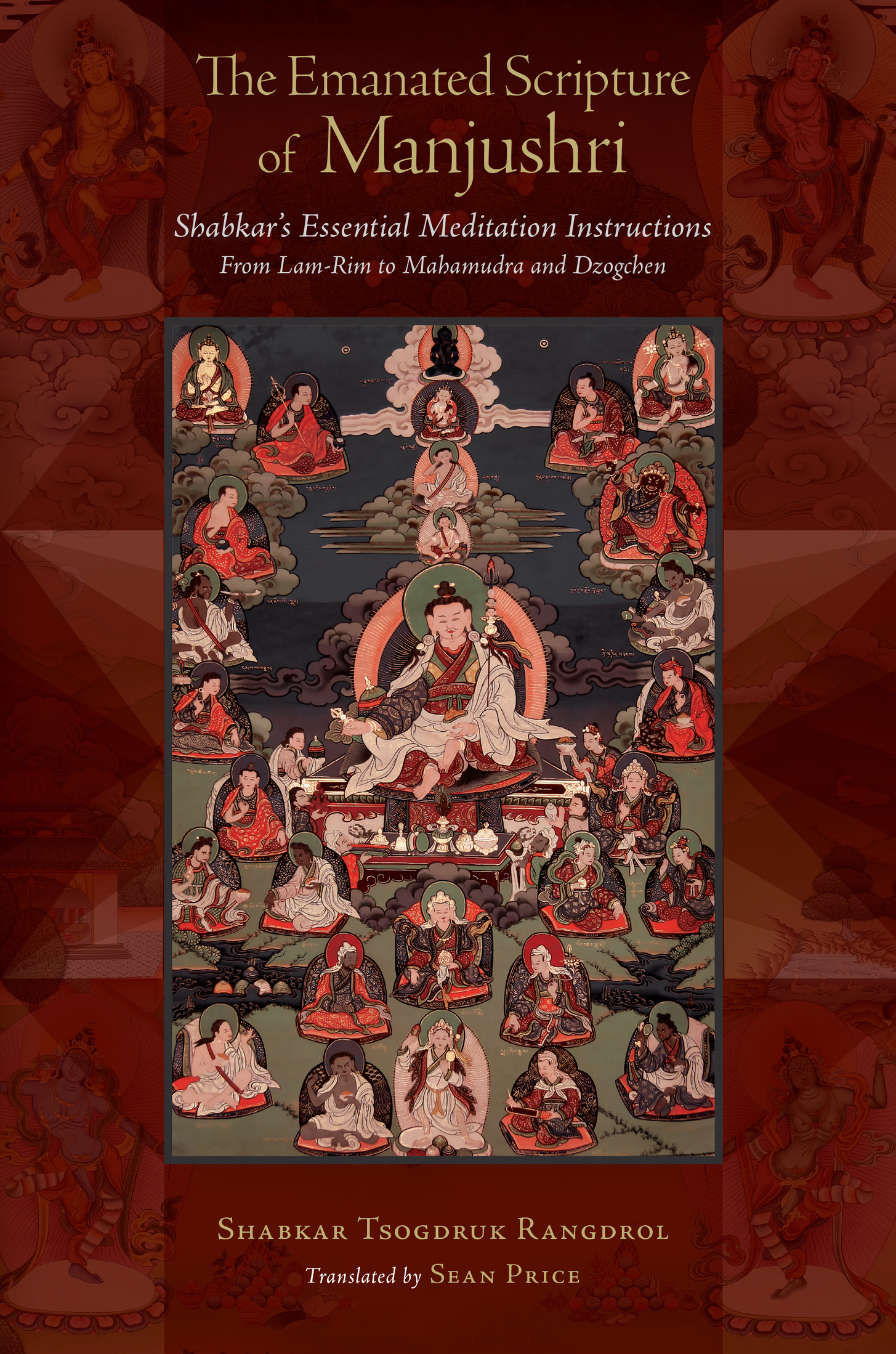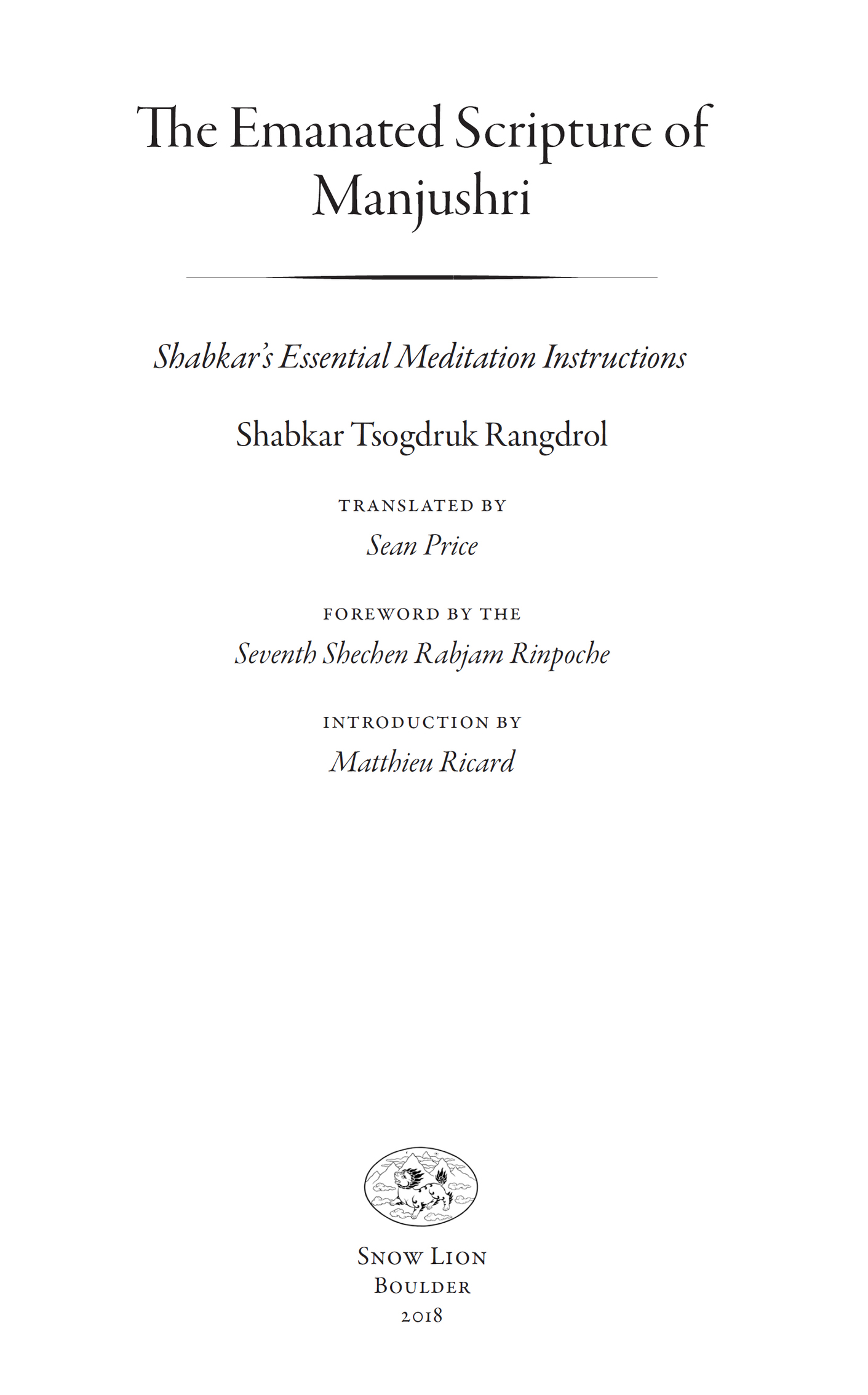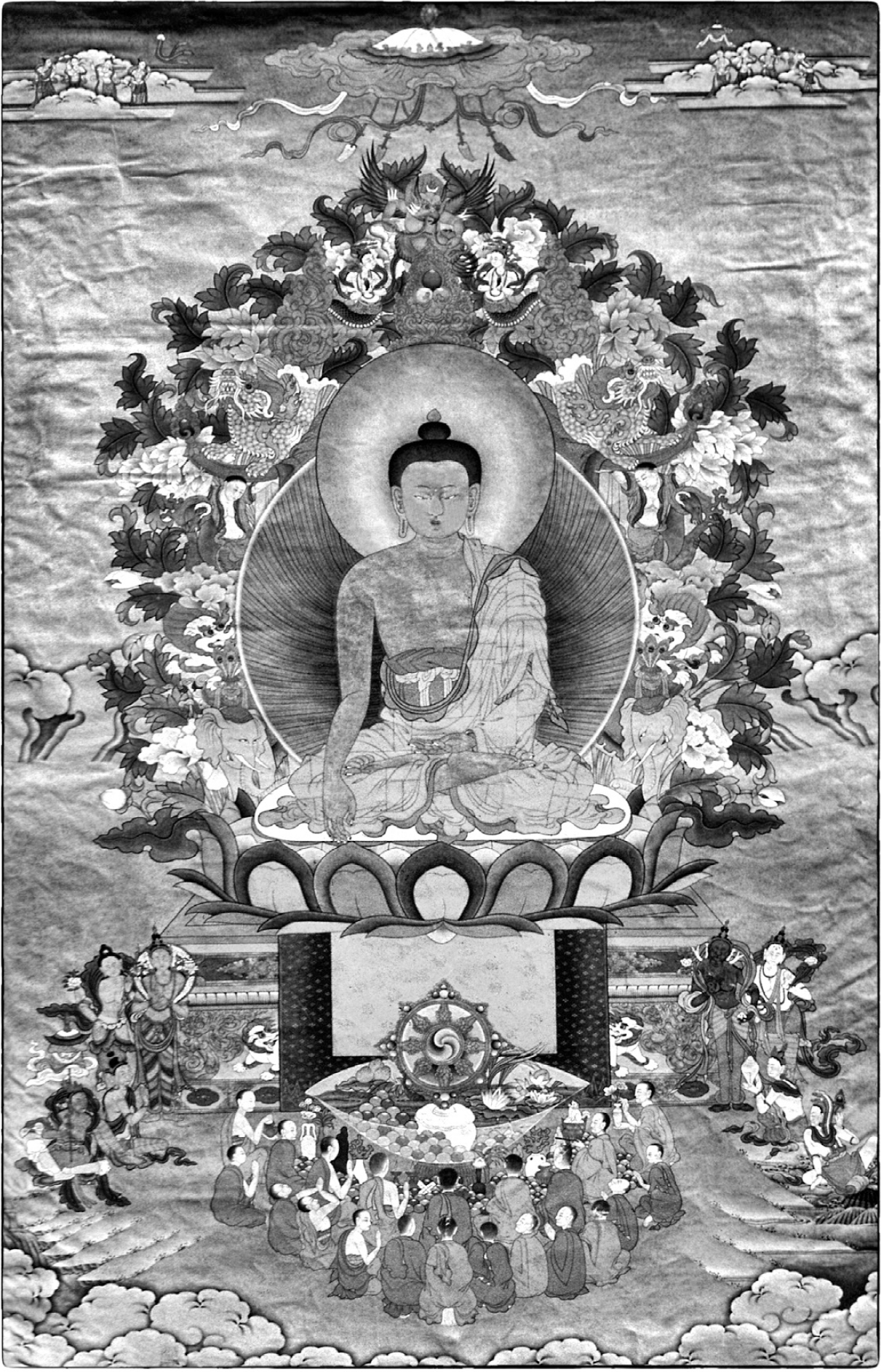Contents
T HE T SADRA F OUNDATION S ERIES
published by Snow Lion, an imprint of Shambhala Publications
Tsadra Foundation is a U.S.-based nonprofit organization that contributes to the ongoing development of wisdom and compassion in Western minds by advancing the combined study and practice of Tibetan Buddhism.
Taking its inspiration from the nineteenth-century nonsectarian Tibetan scholar and meditation master Jamgn Kongtrl Lodr Tay, Tsadra Foundation is named after his hermitage in eastern Tibet, Tsadra Rinchen Drak. The Foundations various program areas reflect his values of excellence in both scholarship and contemplative practice, and the recognition of their mutual complementarity.
Tsadra Foundation envisions a flourishing community of Western contemplatives and scholar-practitioners who are fully trained in the traditions of Tibetan Buddhism. It is our conviction that, grounded in wisdom and compassion, these individuals will actively enrich the world through their openness and excellence.
This publication is a part of the Tsadra Foundations Translation Program, which aims to make authentic and authoritative texts from the Tibetan traditions available in English. The Foundation is honored to present the work of its fellows and grantees, individuals of confirmed contemplative and intellectual integrity; however, their views do not necessarily reflect those of the Foundation.
Tsadra Foundation is delighted to collaborate with Shambhala Publications in making these important texts available in the English language.
Snow Lion
An imprint of Shambhala Publications, Inc.
4720 Walnut Street
Boulder, Colorado 80301
www.shambhala.com
2018 by Tsadra Foundation
All rights reserved. No part of this book may be reproduced in any form or by any means, electronic or mechanical, including photocopying, recording, or by any information storage and retrieval system, without permission in writing from the publisher.
Cover image: Shabkar, from the Shechen Archive, photograph courtesy of Ven. Matthieu Ricard
Cover design by Tsadra Foundation
L IBRARY OF C ONGRESS C ATALOGING - IN -P UBLICATION D ATA
Names: abs-dkar Tshogs-drug-ran-grol, 17811851, author. | Price, Sean, 1968 translator.
Title: The emanated scripture of Manjushri: Shabkars essential meditation instructions /
Shabkar Tsogdruk Rangdrol; translated by Sean Price.
Other titles: Jam dbyans sprul pai glegs bam. English
Description: First edition. | Boulder: Snow Lion, 2018. | Series: The Tsadra Foundation series |
Includes bibliographical references and index.
Identifiers: LCCN 2018011718 | ISBN 9781559394611 (hardcover: alk. paper)
eISBN 9780834841734
Subjects: LCSH : Spiritual lifeBuddhism. | BuddhismChinaTibet Autonomous RegionDoctrines. | Majr.
Classification: LCC BQ 7805 . Z 32513 2018 | DDC 294.3/444dc23
LC record available at https://lccn.loc.gov/2018011718
v5.4
a
For Ven. Konchog Tenzin
B UDDHA S HAKYAMUNI . P HOTOGRAPH COURTESY OF V EN . M ATTHIEU R ICARD /S HECHEN A RCHIVE .
F OREWORD

Shabkar Tsogdruk Rangdrol was the perfect example of a dedicated and accomplished practitioner who became an authentic master and vastly benefited beings. Born in the northeast region of Amdo, he attended teachers of all schools of Tibetan Buddhism and consequently spent years putting their teaching into practice; dwelling in hermitages, remote caves, and even on a distant island in the Blue Lake (Tso Ngnpo). He traveled far and wide throughout Tibet, meeting many of the great masters of his time, practicing in sacred places; he even made the daring pilgrimage through the Ravines of Tsari and traveled as far as Mount Kailash in western Tibet. He visited Nepal and gilded the pinnacle of the revered Jarung Khashor Stupa at Boudhanath, near Kathmandu. His teachings are known to be remarkably clear and profound. He would deliver them through spiritual songs, like the famous yogi Milarepa, or through his writings that fill fourteen volumes, which were published by Shechen Publications.
Like my grandfather and root master, Kyabje Dilgo Khyentse Rinpoche, Shabkar was an upholder of the nonsectarian approach (Rim), which endeavors to ensure the preservation and transmission of the teachings of the various lineages of Tibetan Buddhism, also known as the Eight Chariots of Accomplishment.
I am therefore delighted that my dear friend Gelong Tenzin Jamchen (Sean Price) has brought to completion the translation of the Emanated Scripture of Manjushri, a text that explains the graded path of Buddhism through clear and inspiring pieces of adviceready to be put in practice by anyone who aspires to enter the path of liberation.
May these teachings benefit countless beings and fulfill the compassionate aspirations of our spiritual masters.
The Seventh Shechen Rabjam Rinpoche, Gyurme Chkyi Sengye
I NTRODUCTION BY M ATTHIEU R ICARD
When, in the early spring of 1814, Shabkar arrived at one of the most sacred mountains of Tibet, Mount Kailash, the Silver Mountain, he had made up his mindnothing else mattered but to engage in one-pointed spiritual practice. He wasted no time and within a few days, he collected some provisions and settled in a cave near the Cave of Miracles, where Milarepa had stayed seven centuries earlier. After singing some verses in praise of the holy mountain and of the great Lake Manasarovar, he sealed the entrance to his cave with mud and vowed to practice with complete dedication.
This cave lies a few minutes walk slightly above and on the side of Milarepas cave. To enter the cave, which is below the ground level, one has to descend a few steps. Since this cave is not as famous as Milarepas dwelling (upon which a small temple has now been built), only a few pilgrims know about its location. Consequently, it has been left as it is, and it seems as if Shabkar had just left. The hearth where he used to boil his tea is still there, and an atmosphere of utter simplicity reigns in this secluded retreat place.
This cave is also located near the famous White Footprint, one of the four footprints said to have been left by Buddha Shakyamuni when he traveled miraculously to Mount Kailash. In fact, Tsogdruk Rangdrol (Self-Liberation of the Six Senses, the name given to Shabkar by his root master Chogyal Ngakyi Wangpo, became known as Shabkar, or White Foot, in part because he spent many years near the Buddhas footprint, but also because wherever he would set his feet, the land would become white with virtue, meaning that through his teachings, the minds of the people would be turned toward the Dharma.

